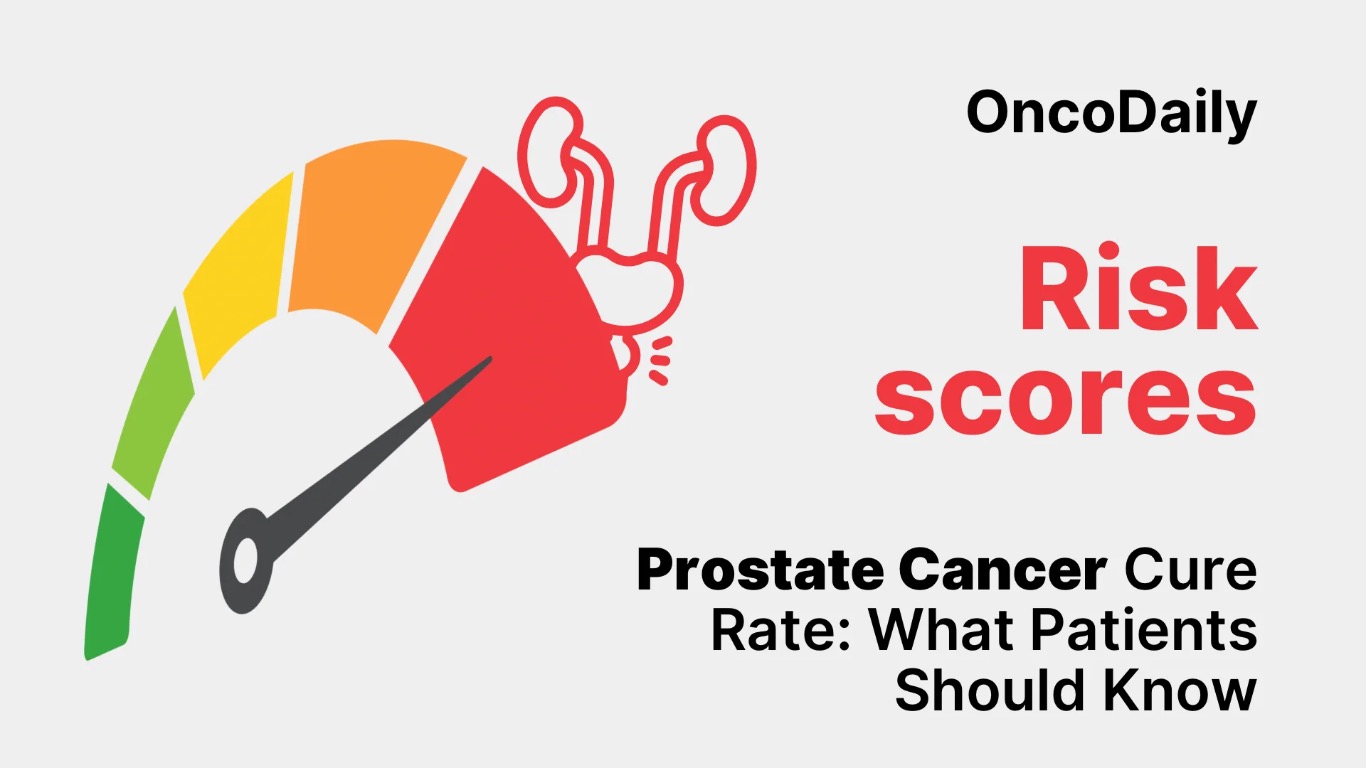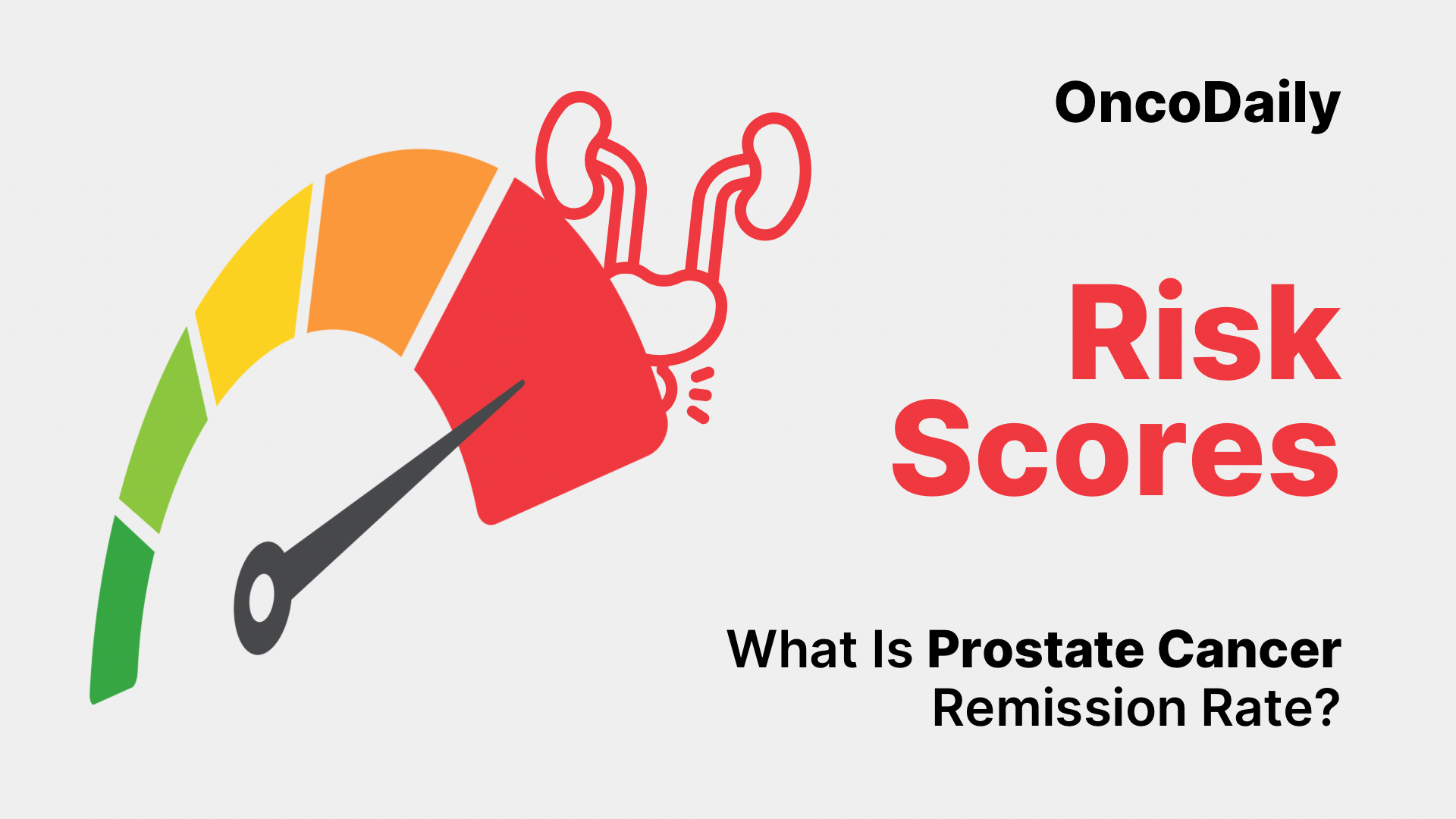Prostate cancer is one of the most common malignancies among men worldwide, accounting for approximately 1.5 million new cases annually and ranking as the fifth leading cause of cancer-related deaths in men (Sung et al., 2021). The prostate gland, located below the bladder, produces seminal fluid, and most prostate cancers originate from glandular (adenocarcinoma) cells.
Because the disease often grows slowly, the prostate cancer remission rate is relatively high when detected early, allowing for effective treatment and long-term survival in most patients. However, aggressive forms can progress rapidly, metastasizing to bones or lymph nodes, and may require systemic therapy.
What Does Remission Mean in Prostate Cancer?
“Remission” in prostate cancer refers to a period when the disease is undetectable or shows no signs of progression after treatment. It does not always equate to a cure but signifies effective disease control. There are two primary types of remission:
- Complete remission: All signs of cancer have disappeared. Prostate-specific antigen (PSA) levels drop to undetectable levels, and imaging shows no evidence of disease.
- Partial remission: The tumor or PSA level decreases significantly but some cancer cells remain detectable.
After remission, patients enter a “surveillance” phase, where PSA levels and clinical symptoms are regularly monitored to detect recurrence early.
Prostate Cancer Survival and Remission Rates
Prostate cancer has one of the highest remission and survival rates among all major cancers. According to the U.S. National Cancer Institute’s SEER program (2025), the overall 5-year relative survival rate for prostate cancer in the United States is approximately 97%, and for localized or regional disease, it exceeds 99%.
This means that most men diagnosed in early stages achieve long-term remission and often live decades beyond their diagnosis. Even in metastatic cases, modern therapies have substantially extended survival.
A 2024 analysis by the European Association of Urology reported that men with metastatic hormone-sensitive prostate cancer (mHSPC) treated with combination therapies such as androgen deprivation therapy (ADT) plus docetaxel or novel hormonal agents (abiraterone, enzalutamide, apalutamide) achieved median overall survivals surpassing 5 years (Fizazi et al., 2024).
For patients with localized prostate cancer, remission rates after surgery or radiation exceed 90% at 10 years (Hamdy et al., 2023).

Read About Prostate Cancer Cure Rate on OncoDaily
Remission After Surgery (Radical Prostatectomy)
Radical prostatectomy, the complete removal of the prostate gland and surrounding tissues, is a common curative treatment for localized prostate cancer. Following surgery, PSA levels should fall to nearly zero within weeks. Persistent or rising PSA levels post-surgery suggest residual or recurrent disease.
Studies have shown that 80–90% of patients remain disease-free for more than 10 years after surgery when the cancer is confined to the prostate (Thompson et al., 2023). Patients with positive surgical margins or extracapsular extension have a higher recurrence risk, but early adjuvant radiation can improve outcomes.
Remission After Radiation Therapy
Radiation therapy—either external beam radiation therapy (EBRT) or brachytherapy—offers equivalent remission rates to surgery for localized disease. PSA levels after radiation decrease gradually over 18–24 months.
Long-term studies indicate 10-year biochemical control rates of 85–95% in low-risk patients and 70–80% in intermediate-risk groups (Dearnaley et al., 2022).
Modern image-guided and intensity-modulated radiation therapies (IMRT, SBRT) have improved remission rates while minimizing urinary and rectal side effects.
Remission in Advanced and Metastatic Prostate Cancer
For patients with metastatic prostate cancer, complete remission is rare but partial remission and long-term disease control are achievable. Hormone therapy remains the cornerstone of management, depriving cancer cells of testosterone, which fuels their growth.
Recent trials have demonstrated remarkable progress. The ENZAMET trial (Davis et al., 2023) showed that combining enzalutamide with ADT significantly improved overall survival in men with mHSPC, with over 80% alive at 3 years compared to 72% in the control arm.
Similarly, the LATITUDE and STAMPEDE trials found that adding abiraterone to ADT extended survival by more than 33%, with many patients maintaining PSA remission for several years (James et al., 2022).
For castration-resistant prostate cancer (CRPC), new treatments such as PARP inhibitors (olaparib, rucaparib), PSMA-targeted radioligand therapy (lutetium-177–PSMA-617), and immunotherapy (pembrolizumab in MSI-H tumors) have improved disease control and remission duration in selected patients (Sartor et al., 2024).

Read About Success Rate of Hormone Therapy for Prostate Cancer on OncoDaily
Factors Influencing Remission Rates
Several key factors influence whether a patient achieves remission and how long it lasts:
- Cancer Stage at Diagnosis: Localized disease has the highest remission potential. Metastatic disease often requires lifelong treatment.
- Gleason Score and Grade Group: Lower scores (≤6) predict better remission outcomes compared to higher-grade (≥8) tumors.
- PSA Level at Diagnosis: High baseline PSA correlates with higher recurrence risk.
- Treatment Type and Sequence: Multimodal therapy (e.g., surgery plus radiation or ADT) can extend remission.
- Patient Age and Comorbidities: Younger, healthier patients tolerate aggressive treatment better, improving outcomes.
Recurrence After Remission
Despite high remission rates, biochemical recurrence—a rise in PSA after treatment—occurs in about 20–30% of patients within 10 years of primary therapy (Freedland et al., 2023).
However, recurrence does not always mean metastasis or death. Many cases are detected early and controlled with salvage therapies such as radiation, hormone therapy, or newer targeted agents.
Can Prostate Cancer Be Cured?
For early-stage disease, yes—prostate cancer can be cured. Cure rates exceed 90% for tumors confined to the prostate. The challenge lies in distinguishing indolent from aggressive cancers to avoid overtreatment.
Active surveillance is now recommended for low-risk disease, where patients are closely monitored rather than immediately treated. This approach maintains quality of life without compromising long-term survival (Klotz et al., 2023).
Life After Remission
Many patients lead long, healthy lives after prostate cancer remission. Regular follow-ups, PSA monitoring, and healthy lifestyle choices—including exercise, balanced diet, smoking cessation, and weight control—help reduce recurrence risk and improve cardiovascular health.
Psychological well-being also plays a vital role. Anxiety about recurrence is common, and support from survivorship programs, counseling, and patient communities is invaluable.
The Future of Prostate Cancer Treatment and Remission
Advances in genomics, artificial intelligence, and molecular imaging continue to transform prostate cancer care. Biomarkers such as BRCA1/2 mutations, DNA repair gene alterations, and PSMA expression are helping oncologists personalize treatment.
Clinical trials investigating combination immunotherapy, radioligand therapy, and next-generation androgen receptor inhibitors promise to further improve remission duration and overall survival in advanced stages.
Conclusion
Prostate cancer remission rates are among the most favorable of all malignancies. With early detection, modern imaging, and multimodal treatment strategies, the majority of patients achieve long-term remission or even cure. Even for advanced disease, emerging therapies offer new hope for durable control and improved quality of life.
Continued research, awareness, and individualized care are key to ensuring that remission becomes not just a milestone—but a lifelong outcome.
You Can Watch More on OncoDaily Youtube TV
Written by Armen Gevorgyan, MD
